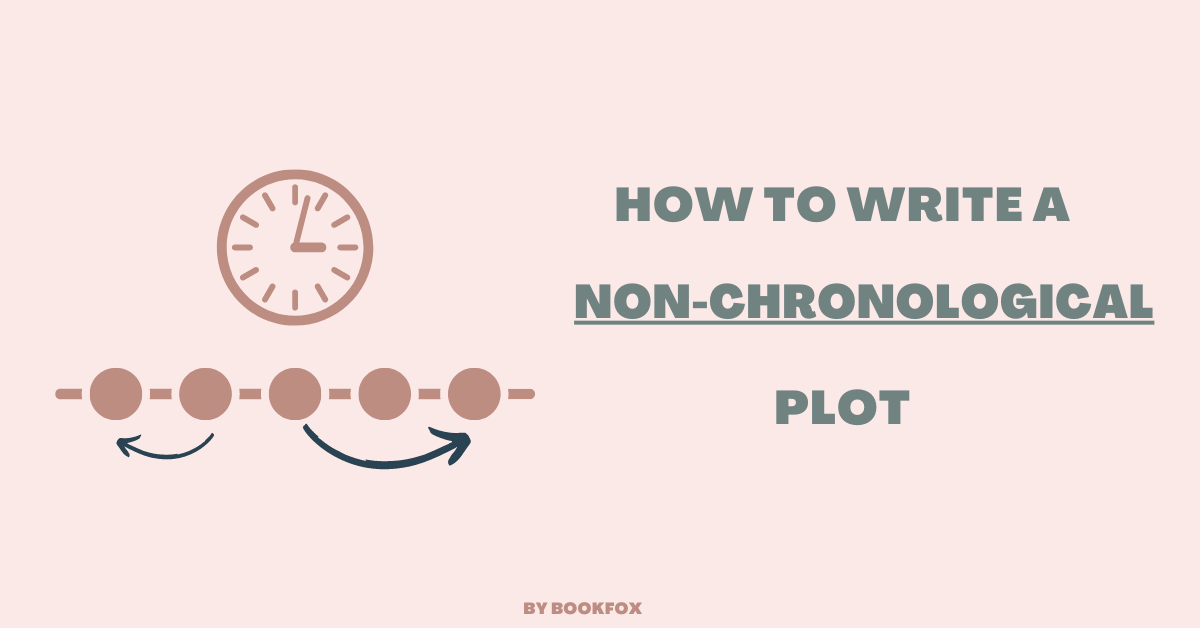
Stories are chronological. One event happens after another.
However, this does not mean that stories have to be told chronologically.
Engaging novels often contain scenes which are presented in a different order than they occur in time. Plots using this technique are called non-chronological or non-linear. Sometimes they are described as disjointed or fractured narratives.
Non-chronological storytelling is nothing new. The Odyssey, for example, features many flashbacks to earlier scenes. Charles Dickens’ A Christmas Carol is structured around showing scenes from the past, present, and future. More recently, non-chronological plots are often associated with intricately-scripted crime films like Pulp Fiction and Memento.
Novels of all genres use non-chronological plots. Often, it is the best way to tell a particular story.
Writers are sometimes hesitant to try writing non-chronological plots. To be fair, non-chronological storytelling is more complex and less intuitive than chronological storytelling. That doesn’t mean you shouldn’t give it a shot, though. As long as you understand the structure you are using, you will be able to manage a non-chronological plot.
Why Use Non-Chronological?
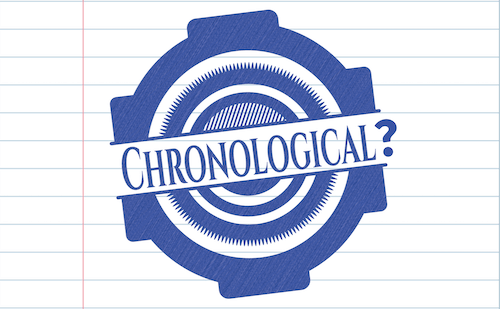
First, you need to be clear about why you are using non-chronological narration. The goal is not to complicate your plot unnecessarily. The goal is to serve the story you are trying to tell.
There are many good reasons to use non-chronological narration. These include:
- Establishing character motivation by showing relevant backstory.
- Building suspense by withholding a crucial scene.
- Foreshadowing what’s coming later in the plot.
- Showing intergenerational connections.
- Letting readers experience memories as they surface in a narrator’s mind.
Once you know why you are using non-chronological narration, you can figure out which form of non-chronological narration you need to use.
Types of Non-Chronological
There are four main types of non-chronological narration.
Each are used for specific reasons:
1.) Flashbacks
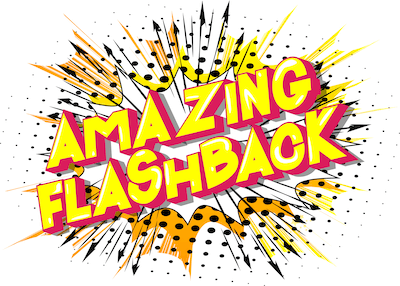
The most common type of non-chronological plotting is the use of flashback (aka analepsis). A flashback is a scene which is shown later than it takes place chronologically.
Most storytelling consists of relating events in the past tense. Flashbacks are simply set further back in the past than the scenes around them.
They are particularly useful for revealing things, such as:
- Concealed crimes
- Family secrets
- Shameful actions
- Traumatic events
- Repressed memories
Present Memories as Flashbacks
Flashbacks are often introduced as a Point-of-View character’s memories.
John Darnielle (singer and songwriter of the band The Mountain Goats) uses this technique throughout his novel Wolf in White Van.
The novel’s present-time story is about a disabled, middle aged game designer named Sean. Sean’s life is defined by the choices he made as a teenager. Because he has never gotten past these early years, it makes sense that his first-person narration often travels to the past.
Throughout the novel, Sean hints at the central violent action which led to his present circumstances. Darnielle withholds the actual scene until the final chapter. This builds reader anticipation throughout the novel.
At the end of the second to last chapter, Sean sets up the flashback:
“And then I had a memory from childhood, not childhood really but a while afterward, but what felt, in that moment, like childhood.”
When the next chapter opens, the reader is placed completely in the world of Sean’s adolescence. Although it is the last chapter in the book, it is the earliest chronologically.
2.) Flashforwards

You can jump forward just as easily as you can jump backward. A flashforward (aka prolepsis) is a scene which is shown earlier than it takes place chronologically.
Don’t overdo it with flashforwards: If you give away too much too early, you risk sapping the tension out of your plot.
On the other hand, a short, strategically-placed flashforward can stimulate your reader’s interest. If you tease an incongruous or high-intensity scene, the reader will have to keep reading to see how the character ends up in that situation.
Flashforwards Build Momentum
Horace McCoy uses recurring flashforwards in his classic hardboiled crime novel They Shoot Horses, Don’t They? (later made into a film starring Jane Fonda).
McCoy’s novel is about a young man named Robert who comes to California and meets an aspiring actress named Gloria. The two of them enter a multi-week dance contest together. After the grueling dance marathon finally ends, Robert kills Gloria on the boardwalk—at her request. Robert is arrested in the book’s final scene.
The reader never has any doubt about Gloria and Robert’s fates. McCoy shows Robert on trial for Gloria’s murder right in the opening chapters.
Between every subsequent chapter, McCoy shows the reader snippets of the judge’s sentencing speech. Some are as brief as:
“…executed and put to death…”
These regular flashes of monologue keep the reader focused on the future. Every scene of the novel is heightened by the knowledge that the plot will inevitably culminate in murder and prosecution.
The reader keeps turning the pages to see how the two dancing kids will end up at such a dark place.
3.) Reverse Order
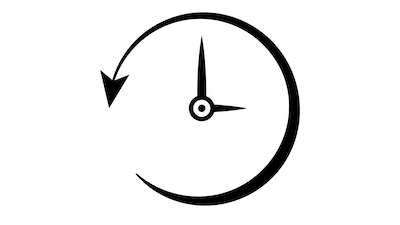
Reverse chronological plots are actually fairly linear—it’s just that the line runs in the wrong direction.
Instead of following the traditional order of beginning> middle> end, a reverse chronological novel is structured end> middle> beginning. Reading reverse chronological narratives can feel almost like watching video play backwards.
Another way of looking at reverse chronological structure is to think in terms of cause and effect. Chronological plots are often structured around following a character’s action forward to its effect. A reverse chronological plot is structured around tracing an event backward to its cause.
Explore Trauma
Stephen Elliott’s novel Happy Baby is structured in a strict reverse-chronological order.
In the opening chapter, we meet a 36-year-old man named Theo, who carries the weight of a childhood defined by violence and incarceration.
In each successive chapter, we encounter Theo at a younger and younger age. Gradually, the the story of Theo’s trauma and survival are unraveled. Each chapter is written in present tense and functions more or less as a stand-alone story. The reader is never disoriented.
As with Wolf in White Van, the last chapter of Elliott’s book is the earliest chronologically. In this chapter, Theo is a fifth grader, living in Chicago with his father and his terminally-ill mother.
At one point the young Theo says:
“My mother hasn’t died yet, but she has gotten worse.”
This line lands much harder than it would otherwise—especially the word “yet”—because the reader already knows everything that Theo will go through once he is orphaned.
4.) Parallel Timelines

This technique is a bit different than the other non-chronological techniques: With parallel timelines, you are balancing multiple narratives, not just re-ordering a single narrative.
Each of your individual timelines will probably be chronological. However, when you move between timelines in the novel, you are flashing back and flashing forward.
For example, Michael Cunningham’s novel The Hours follows the stories of three women connected to Virgina Woolf’s novel Mrs. Dalloway (including Woolf herself). Woolf’s narrative is set mostly in 1923. The other two women’s narratives are set in 1949 and 1999. Throughout the book, Cunningham rotates between these distinct, but thematically-connected, timelines.
Use Parallel Timelines to Tell Multi-Generational Stories
Parallel timelines are most commonly seen in longer, multi-generational novels.
Phillipp Meyer’s Revisionist-Western The Son follows the brutal rise of a Texas dynasty. The McCullough clan goes from settlers, to cattle ranchers, to oil barons.
The novel alternates between three timelines:
- In the first timeline, the family’s patriarch, Eli, narrates his adventures on the frontier in the late 19th century.
- In the second timeline, Eli’s son Peter rebels against his family in the early 20th century.
- In the third timeline, set in 2012, Eli’s elderly great-granddaughter Jeanne Anne looks back at her decades-long reign over her inherited empire.
Trade Off: Multi-generational novels can show each generation’s narrative in parallel or consecutively. There are advantages and disadvantages to each approach.
Yaa Gyasi’s Homegoing follows the descendants of an Asante woman from 18th century Ghana through to contemporary America. Each successive chapter moves forward in time, telling the story of another descendent in either Africa or the United States.
Gyasi’s chronological approach allows for the inclusion of more POVs, and allows her to cover a greater span of time. The reader is also able to clearly see social changes over time.
However, Gyasi’s approach means that previous generations are quickly left behind. Meyer’s non-chronological approach, on the other hand, allows him to keep developing characters of earlier generations throughout the novel.
Meyer’s approach also allows him to highlight connections between generations. Further, it allows him to portray action at different paces, because he is not as bound by the linear passage of time.
If you are writing a large-scale, multi-generational novel, you will have to decide if a chronological or non-chronological structure will serve you better.
Travel through Time
Writers working in a speculative fiction genre have the additional option of using time travel.
In Octavia E. Butler’s novel Kindred, a young African American woman named Dana is pulled back and forth from her home in 1970s California to a plantation in early-19th century Maryland. In the historical timeline, Dana encounters her ancestors (which include both enslaved people and slaveholders).
Kindred is like other multi-generational novels in that Butler balances the parallel timelines of ancestors and descendants. However, because Dana (and later, her husband Kevin) appear in both timelines, the plot is more continuous.
Time travel obviously won’t be on the table if you are writing realist literary fiction. If you are working in any sci-fi or fantasy sub-genre, though, you can play with using technological or supernatural devices to allow characters to move or see through the limits of time. Your characters might actually be living their lives non-chronologically.
Non-Chronological Management
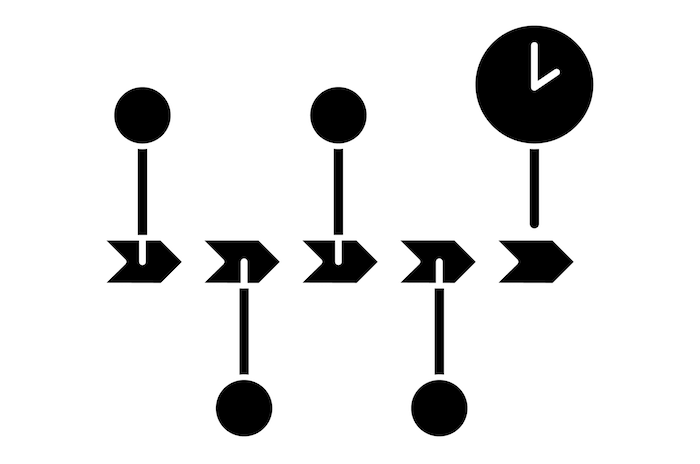
Even when you know what type of non-chronological structure you are using, managing this structure can feel like a juggling act.
There are several steps you can take to get a handle on your non-chronological structure:
1.) Don’t Worry about Structure Too Early
Your novel’s structure is of course important, and you will eventually have to figure out what works best for your project. This doesn’t mean you should let structural concerns keep you from getting words down on the page.
Early in the drafting process, your time might be better spent developing strong scenes. You can always reorder them later.
Stephen Elliott didn’t draft the chapters of Happy Baby with the intention of placing them in reverse chronological order. As he explains in an interview with the Los Angeles Review of Books, he wrote each chapter individually. He initially assembled them as a chronological manuscript for his press:
“When I turned it in to Dave Eggers, who was editing it at McSweeney’s, I had made it linear […]. He said, ‘What if these went backward?'”
When revising your own manuscript, it’s always worth asking yourself questions like “What if these went backward?” or “What if these went in a different order?”
2.) Reverse-Outline as You Go

Some writers like to outline their novels before they start. Others, like Stephen King, prefer to just start writing.
Regardless of which one you are, it’s helpful to reverse-outline your non-chronological plot after you have draft pages in place.
Keep tracking of what scenes occur when, and what scenes are shown when, can be tricky. Writing out an updated outline of what you have will allow you to quickly get a handle on both timeline and plotting.
Reverse-outlining helps you make sure:
- You aren’t revealing plot points too early.
- You are providing the reader with all the information they need early enough.
- Your timeline of events makes sense.
Reverse-outlining doesn’t have to be a formal or involved process. Authors use different outlining processes, such as:
- Hand drawn sketches of plot shape.
- A master word processing document that is updated with every revision.
- An Excel spreadsheet where scenes can be moved around as cells to see how they look in different orders.
Your reverse outline is a work document for you, not the reader. Whatever method helps you visualize information is fine.
3.) Add Signposts
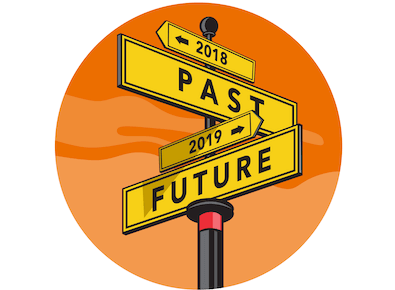
The biggest risk of a non-chronological plot is that a reader will be confused. If you lose them when you jump forward or backward, they will continue be confused in subsequent scenes.
You can largely avoid this pitfall by making sure to include signposts.
There are lots of ways to indicate when and where a section is set. We can see some of these in the books discussed above.
- Elliott contextualizes his narrator’s age and location in-scene early in each chapter of Happy Baby.
In the first paragraph of Chapter 10, for example, Elliott makes it clear that Theo is in a youth detention facility in Chicago:
“At night, when our door is locked, we aren’t supposed to be talking. […] Through the window I make out the dark outline of the Henry Horner housing projects, the sharp corners facing Western…”
In the next paragraph, Elliott works in that Theo is only thirteen years old at this point:
“’See any birds?’ Petey asks in a low whisper. He turned sixteen yesterday, three years older than me, but we don’t celebrate birthdays here.”
- Cunningham titles each chapter of The Hours with the name of its point-of-view character.
The reader is always clear if they are entering a “Mrs.Dalloway””(1999) chapter, a “Mrs. Woolf” (1933) chapter, or a “Mrs. Brown” (1949) chapter.
- Like Cunningham, Meyer identifies the POV character in the header of each chapter of The Son. He also always indicates the year of action in either a sub-header or the chapter’s first sentence.
For example, Chapter 28 consists of the Eli McCullough narrating action that occurs in 1850. To make sure the reader follows the 95-year leap forward to the following chapter about Eli’s great-granddaughter, Meyer heads it:
CHAPTER TWENTY-NINE
JEANNIE McCULLOUGH
1945
4.) Find a Reader

Even with signposts in place, a reader might still be disoriented by your novel’s shifts in time.
A little bit of disorientation can be great, because it encourages a reader to keep reading to see how the pieces fit together. Excessive disorientation will have the opposite effect: A reader who is hopelessly confused will put the book down in frustration.
After writing your entire novel, it might be impossible for you to gauge how difficult it is to follow your non-chronological plot. You know all of the pieces that are coming, so you can’t completely put yourself in the reader’s shoes at a particular point in the reading experience.
The only solution is to find someone else to read your first full draft.
Ask your reader to mark any places where:
- They become confused about the chronology of events.
- They become frustrated or disoriented by the plot.
- They have to double back to figure out what is happening.
- They have forgotten who a character is.
- They realize they had forgotten about a timeline until it returns.
- They find themselves skipping over any scenes or timelines.
If you are receiving formal feedback on your manuscript—such as from a writing group, teacher, or a professional editor—then you can take advantage of that opportunity to ask them these questions.
Your reader doesn’t have to be a writer, though. They just have to be an avid reader. If you have a generous friend, partner, or relative who fits the bill, they can provide you with this feedback too.
After all, that’s what a book needs most: a reader.
Guest Author:
Ben Nadler is the author of the novel The Sea Beach Line. He is currently a Ph.D. candidate in English at SUNY Albany.
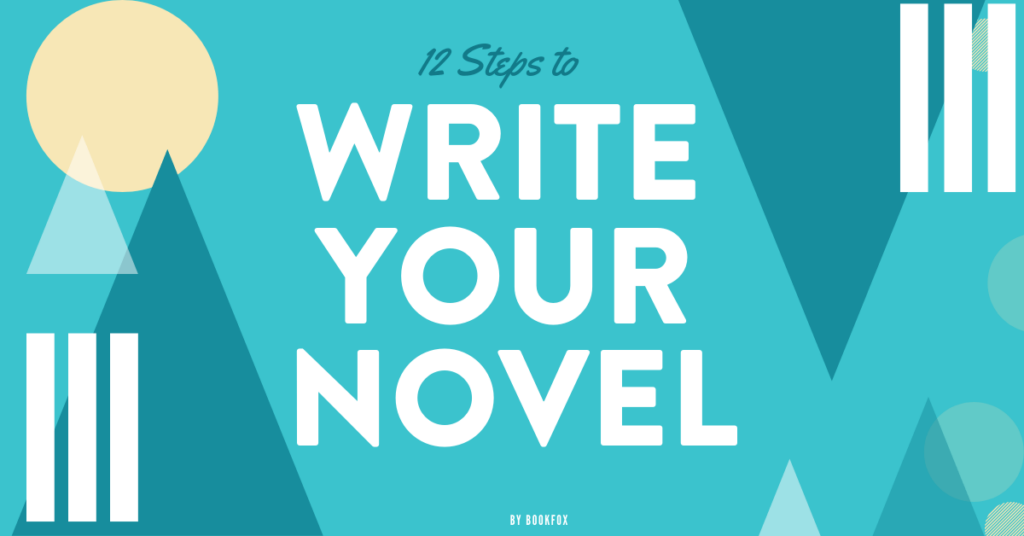
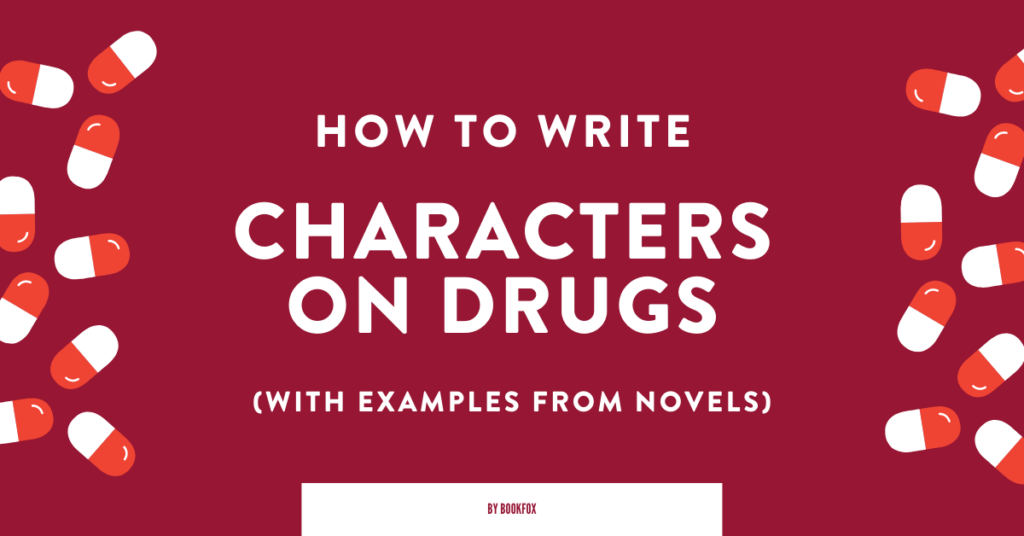

2 comments
What about frame stories? These are, I guess, a form of flashback, because they tell of events that came earlier. The difference is that they are about events the narrator was not present for.
This is an excellent tool for 1st-person, because the biggest drawback of 1st-person is that the narrator can’t tell us what they don’t know, meaning they can’t relate scenes they were not present for unless someone tells them a story, which they then relate to the reader.
What is odd about that, yet seems natural, is it then begins to ‘feel’ like 3rd-person due to the ‘I, we, us’ pronouns being replaced with ‘he, she, her, him, them, they’. Also since the narrator was told the story, they know the story, which gives them a limited omniscience, meaning it can be told to the reader in a form of omni.
Hi there, I’m determined to find a way to make a 70’s story relevant to today by using references across the era’s in a natural and flowing way, and tell it in the first-person present. For example…
We met in September 1972 and she looked a bit like Kate Winslet, but each time she smiled I was also reminded of Anna Scott in that movie Notting Hill. I bought a mini for $150 and as we sang along to Stevie Wonder’s new album Talking Book, she looked on Ticketmaster to see if he was touring soon.
The intention is for the reader to feel connected no matter what age they may be.